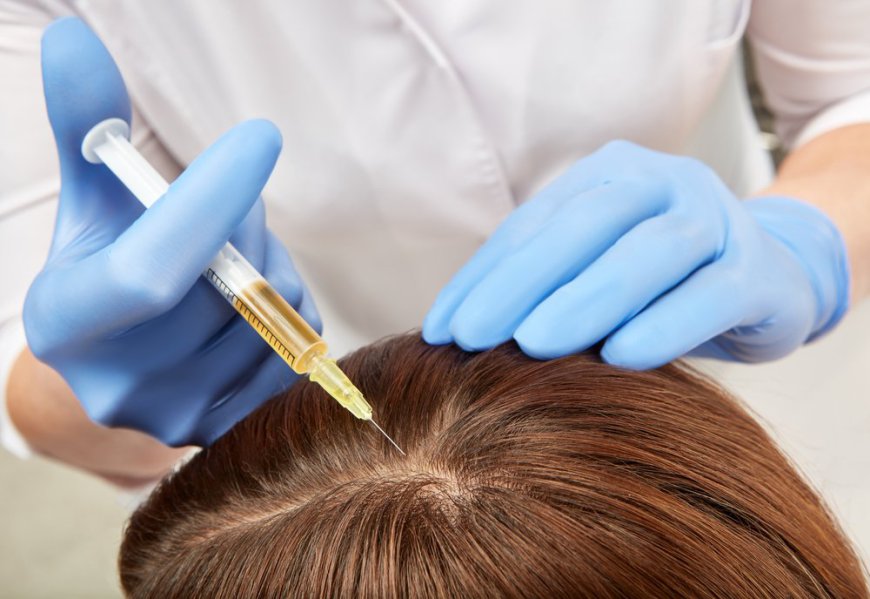PRP Hair Therapy: Aftercare Instructions

Platelet-Rich Plasma (PRP) therapy has emerged as a revolutionary treatment for hair loss, gaining popularity for its effectiveness and minimal invasiveness. PRP Hair Therapy Cost in Dubai utilizes the body's natural healing properties to stimulate hair growth, making it a sought-after option for both men and women experiencing thinning hair. While the treatment itself is straightforward, proper aftercare is crucial to achieving optimal results. This article provides essential aftercare instructions to ensure the best outcomes following your PRP hair therapy session.
Understanding PRP Therapy
Before delving into aftercare instructions, it's essential to understand what PRP therapy entails. The treatment begins with drawing a small amount of your blood, which is then processed in a centrifuge to separate the platelet-rich plasma from other components. This concentrated plasma, rich in growth factors, is then injected into the scalp where hair thinning or loss is occurring. The growth factors in PRP promote healing, stimulate hair follicles, and enhance hair growth.
Immediate Aftercare Instructions
After your PRP session, the following immediate aftercare instructions should be followed:
1. Avoid Touching or Rubbing the Scalp
It is crucial to avoid touching or rubbing your scalp for at least 24 hours post-treatment. This helps prevent irritation and allows the injected PRP to settle effectively into the hair follicles.
2. Keep Your Hair and Scalp Clean
For the first 24 hours, refrain from washing your hair. After this period, you can gently wash your hair using a mild shampoo. Avoid products that contain harsh chemicals, sulfates, or parabens, as these can irritate your scalp and hinder the healing process.
3. Avoid Heat and Styling Tools
For at least three days after the procedure, avoid heat styling tools, such as hair dryers, straighteners, or curling irons. Heat can cause irritation and disrupt the healing process of the scalp.
4. Steer Clear of Intense Physical Activity
For the first 48 hours, it’s advisable to avoid intense physical activities, such as heavy exercise or strenuous workouts. Sweating can irritate the scalp and may increase the risk of infection.
Daily Care Routine
Following the initial aftercare instructions, here are daily care routines to incorporate into your post-PRP therapy regimen:
1. Gentle Hair Care
When you resume washing your hair, use a gentle, sulfate-free shampoo and conditioner. Pat your hair dry with a soft towel instead of rubbing it, as this can prevent unnecessary stress on the scalp.
2. Scalp Massage
Once you have allowed sufficient healing time (typically after a week), gentle scalp massages can enhance blood circulation to the hair follicles. Use your fingertips to massage the scalp in circular motions. This not only promotes relaxation but also helps in distributing the PRP evenly within the scalp.
3. Stay Hydrated and Maintain a Healthy Diet
Staying hydrated is essential for overall health and can aid in the healing process. Consuming a balanced diet rich in vitamins, minerals, and proteins can significantly impact hair health. Foods high in vitamins A, C, D, and E, as well as zinc and iron, can support hair growth.
4. Follow-Up Treatments
PRP therapy often requires multiple sessions to achieve optimal results. Ensure you follow your provider’s recommendations regarding the timing of follow-up treatments. Regular treatments can maximize the benefits of PRP and enhance hair restoration.
Avoiding Potential Complications
While PRP therapy is generally safe, there are a few precautions to avoid complications during the recovery process:
1. Avoid Sun Exposure
Excessive sun exposure can irritate the scalp and potentially cause complications. If you must be outdoors, wear a hat or use sunscreen designed for the scalp to protect your skin.
2. Refrain from Alcohol and Smoking
Avoid alcohol consumption and smoking for at least a week after your PRP treatment. These substances can negatively impact blood circulation and healing, potentially diminishing the effects of PRP therapy.
3. Be Aware of Symptoms
Monitor your scalp for any unusual symptoms, such as increased redness, swelling, or pain. Mild tenderness and swelling are normal after the procedure, but if you experience severe discomfort or signs of infection, contact your healthcare provider promptly.
Long-Term Hair Care
Incorporating a long-term hair care routine can enhance and maintain the results of your PRP therapy:
1. Use Hair Growth Products
Consider using hair care products that contain ingredients known to promote hair growth, such as biotin, minoxidil, or saw palmetto. Consult with your healthcare provider to determine which products may be suitable for your hair type and condition.
2. Regular Check-Ups
Schedule regular check-ups with your healthcare provider to monitor your progress and address any concerns. These visits can also help assess the effectiveness of the treatment and adjust any subsequent therapies accordingly.
3. Consider Lifestyle Changes
Implementing healthy lifestyle changes, such as managing stress through exercise or mindfulness practices, can positively influence hair health. High stress can contribute to hair loss, so finding ways to reduce stress is beneficial.
Conclusion
PRP hair therapy can be a transformative solution for those struggling with hair loss, but following the proper aftercare instructions is essential for achieving the best results. By adhering to the immediate, daily, and long-term care routines outlined in this article, you can maximize the benefits of PRP therapy and enjoy a fuller, healthier head of hair. Remember that patience is key, as hair growth takes time. With consistent care and attention, you can look forward to a positive transformation in your hair health.
